If you have chosen a vehicle with an Alde Central Heating System or you have decided to replace your old system with an Alde, then you have made an excellent choice and you will be able to relax and unwind in your home away from home, with the peace of mind you will keep toastly warm at night and have a fabulous supply of hot water! Only Alde provides central heating and hot water in one product....
Alde Water Heaters. The Alde system uses gas and/or electric. They have managed this excellence because Alde has well over 60 years of investigating the best ways to heat vehicles and therefore their knowledge is vast. Also they have tested their products in some of the most extreme places and weather conditions the Earth has to offer!
However even the most brilliant inventions need maintenance! Some of the most commonly asked questions to the Alde team and also to our staff here at Leisureshopdirect is what type of antifreeze should I be using in my vehicle; how often should I change antifreeze and how do I change it? Hopefully the Alde Antifreeze information below will help you out if you have been contemplating the need to change the antifreeze in your motorhome or caravan.
The fluid that is found in an Alde Central Heating System is actually an Ethylene Glycol based antifreeze and coolant. It is the same antifreeze and coolant you would find in any automotive engine or radiator system. Ethylene Glycol Antifreeze is a mixture of Ethylene Glycol and de-ionised water. It is often made up of corrosion inhibitor, virucides and coloured dyes. So, what does this liquid do? Ethylene Glycol Antifreeze has a number of functions within the heating system. Primarily, as the name suggests it’s an antifreeze, giving you frost protection down to -36 degrees Celsius when it is mixed 50:50 with water, but it has a number of other things it does. It is also a corrosion inhibitor which protects all the hot surfaces within the heating system. It’s a virucide which prevents bacterial growth within the system and it acts as a coolant, which helps to give you a nicely balanced heating system.
Alde recommend that you do not mix antifreeze types and there are a number of different types available on the market.
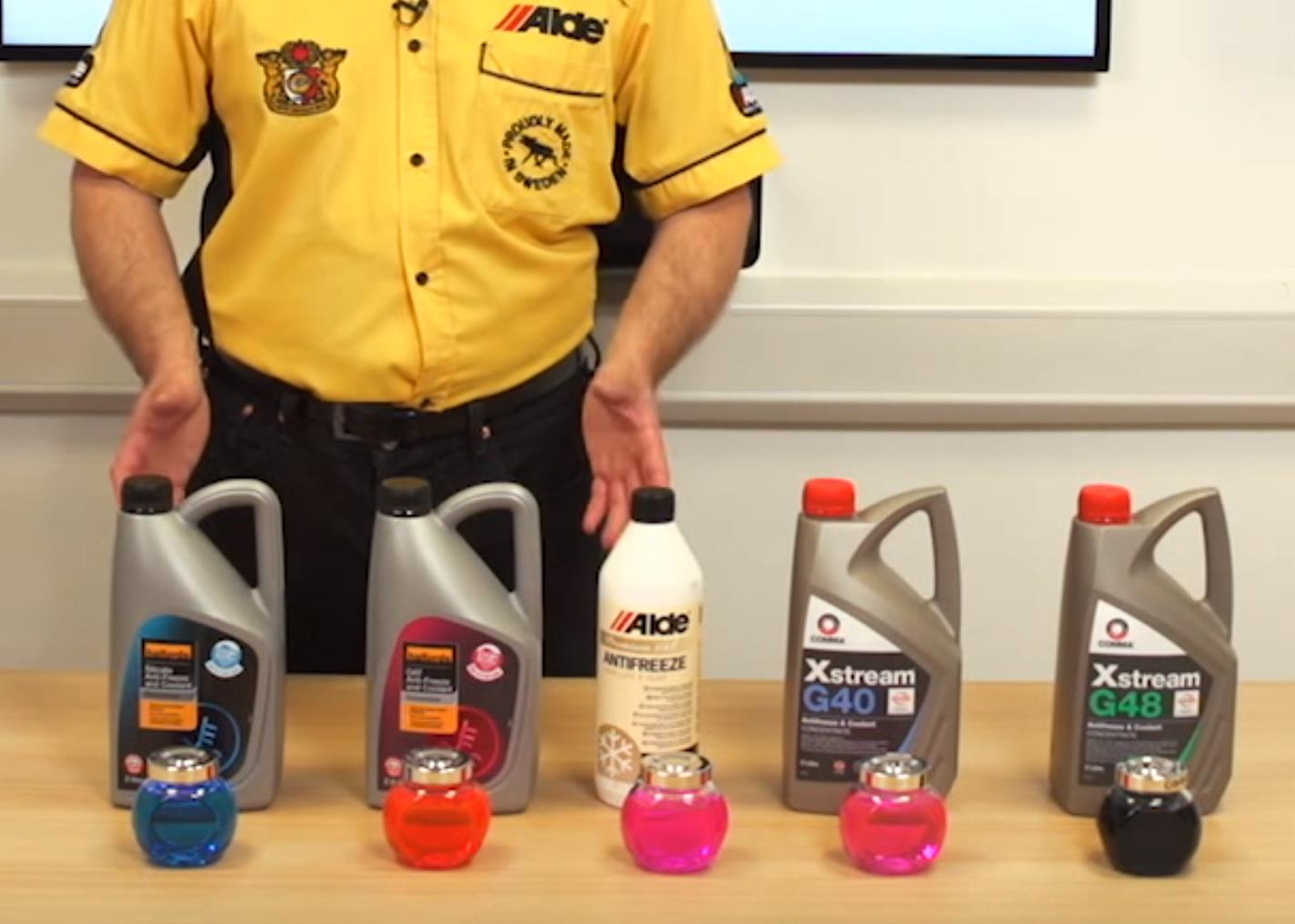
The blue antifreeze in the Alde picture, a silicate-based mixture is probably the most commonly used in the caravan and motorhome industry. The orange, OAT antifreeze is perhaps more common in Europe than it is in the UK, particularly in our industry.
Alde G13 Premium Antifreeze or G12++ is pink and is the type of antifreeze Alde recommend to use in Alde Heating systems. Green antifreeze was often used in older heating systems and should no longer be used. The only antifreezes you can mix are the blue antifreeze with the pink G13 or G12++. Before using the antifreeze, it should be mixed at a ratio of 50% Ethylene Glycol and 50% de-ionised water. It is absolutely essential that the antifreeze is at least 40% in strength otherwise you could experience operational problems with you Alde Central Heating System.
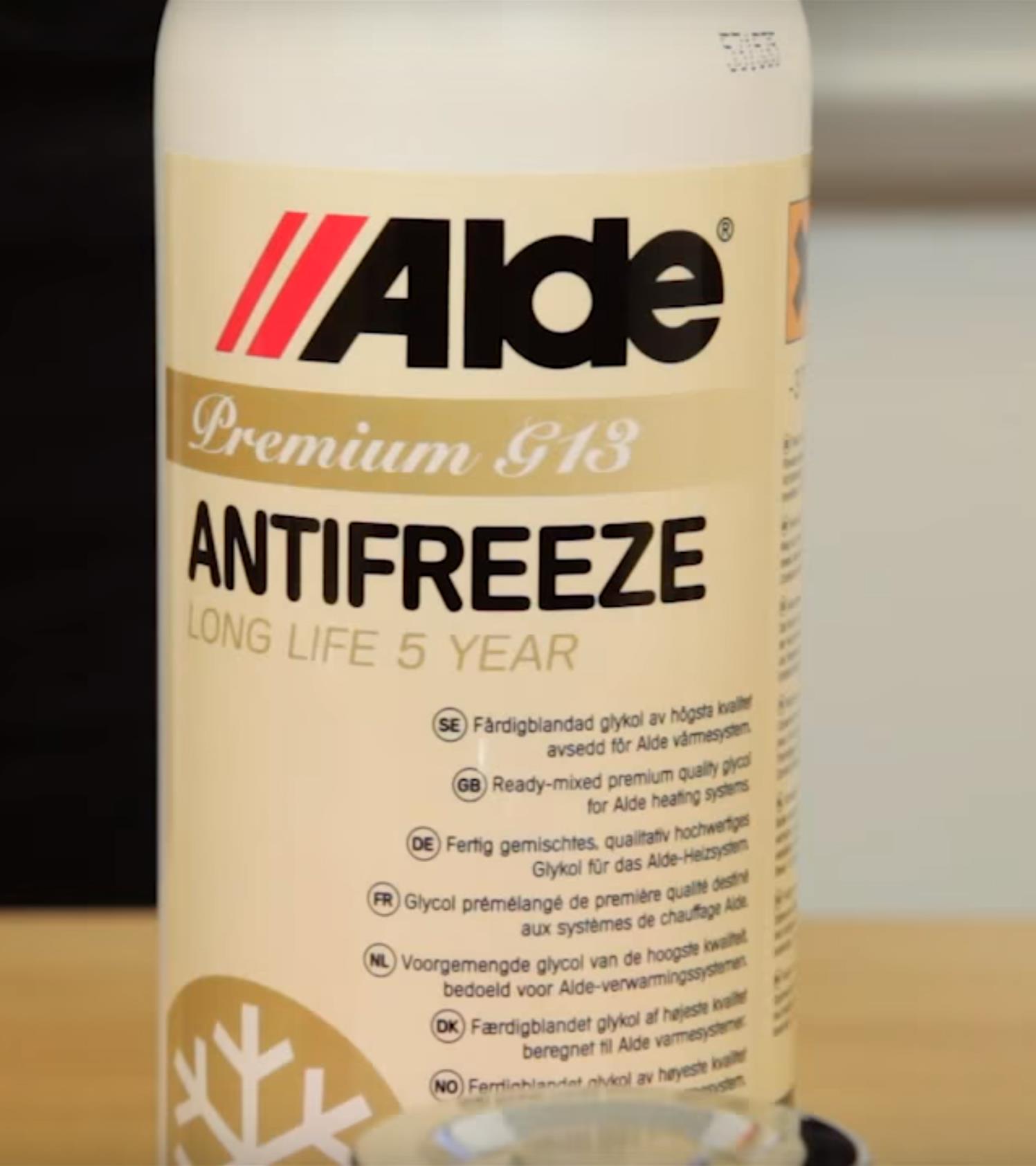
Please note that there is no industry standard indicating what colours the different types of antifreeze should be. Antifreeze actually starts of life colourless and the dye is added in by the manufacturer. You need to choose the antifreeze you need based on the specification, so always make sure you read the label! Most UK manufactures use a blue dye for their silicate-based antifreeze and this generally has a 2-year life. If you are unsure what type is in your heating system, the safest thing to do is to change it after 2 years.
Remember Alde recommend you use the G13 or G12++ Antifreeze (meeting VAG G12++ or G13 specification) in your caravan or motorhome as it is a premium mixture and has a much longer 5-year life.
So, the next thing that comes to mind is how to do an Alde coolant or Alde antifreeze change. To do this you will need a 12V Leisure Battery, a waste hose, an Alde Service Pump and obviously the Ethylene Glycol G13 Antifreeze and the de-ionised water.
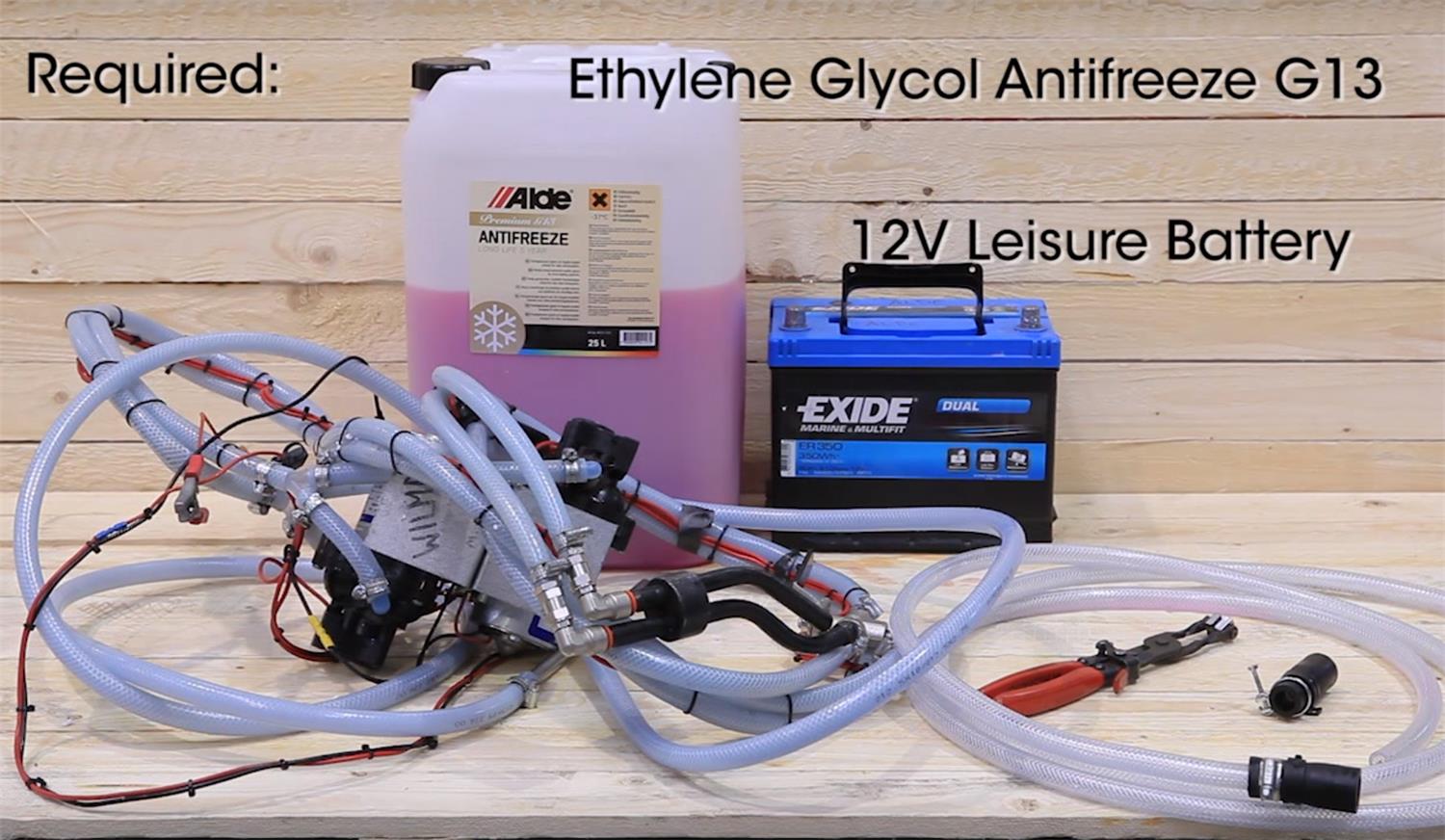
The Alde service pump comes in two lengths-
Alde Service Pump- 5M or the
Alde Service Pump- 8M.
The tools that you will need are closing pliers and a 22-19mm rubber adapter.
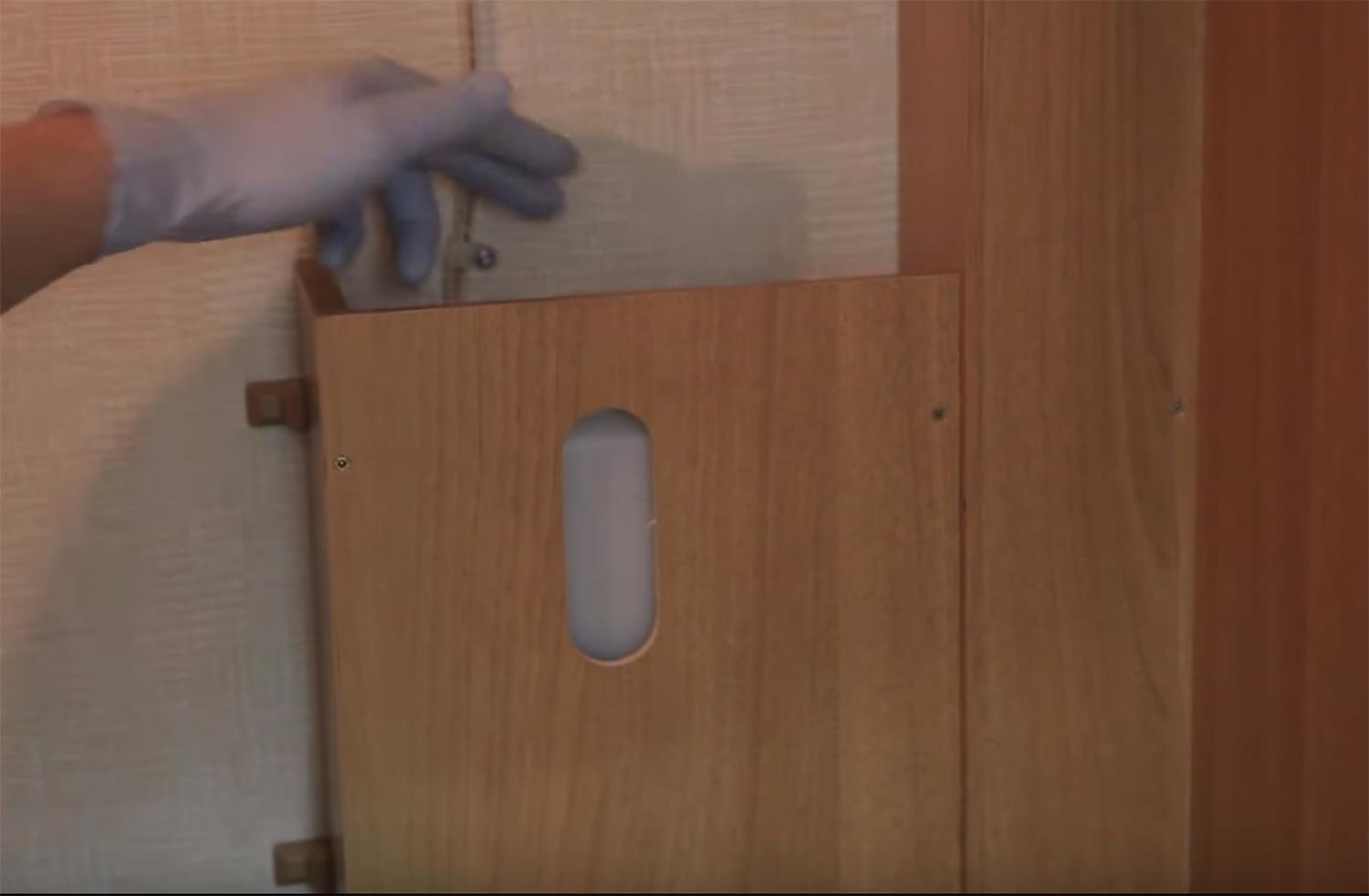 Locate the expansion tank in your vehicle
Locate the expansion tank in your vehicle.
Firstly, you need to locate the expansion tank and the drain-down point underneath the vehicle.
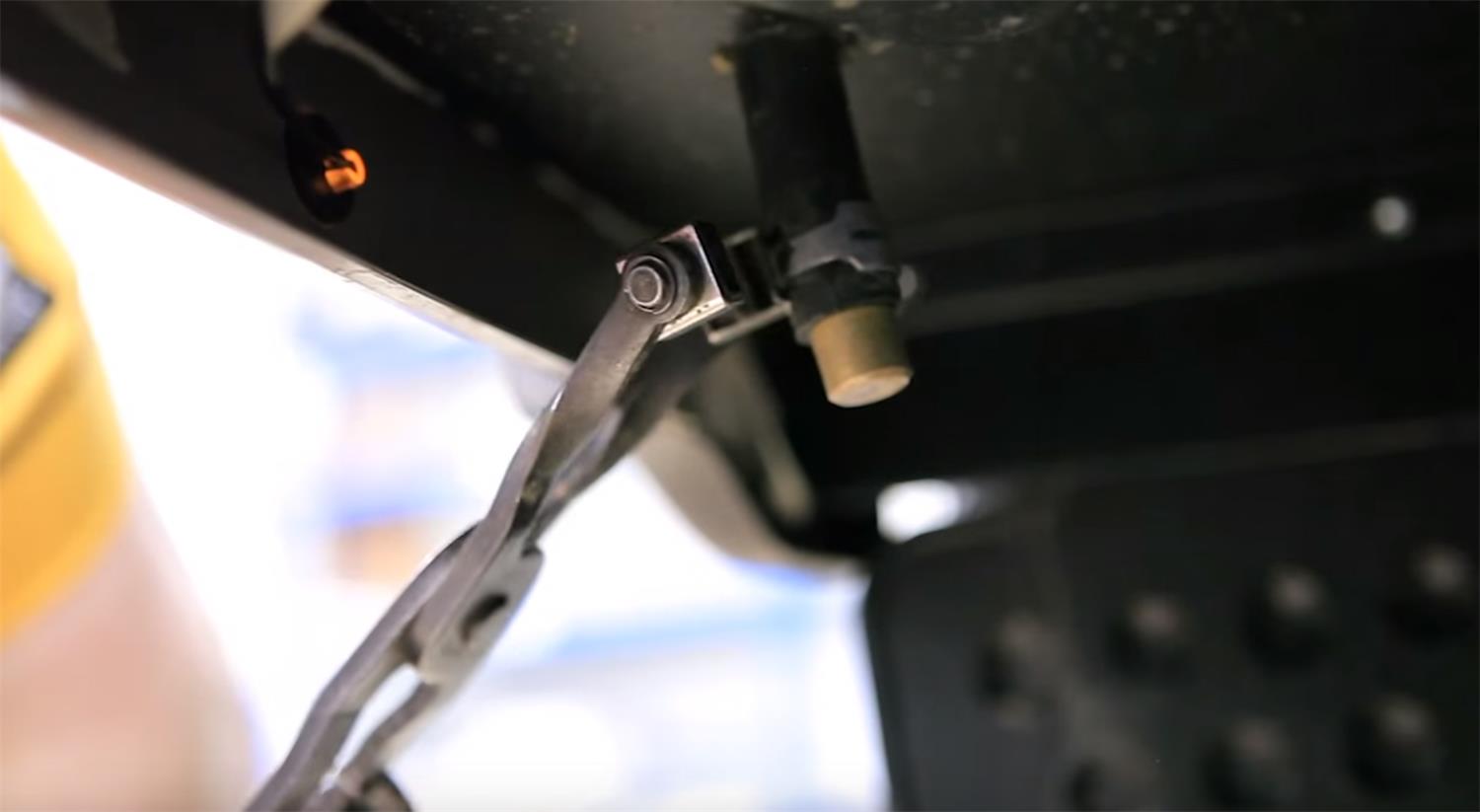 Drain-down point
Drain-down pointRemove the brass drain bung and allow the system to drain before replacing the brass bung. If you don’t properly re-insert the brass bung you could have a horrible mess on your hands with a major spill!
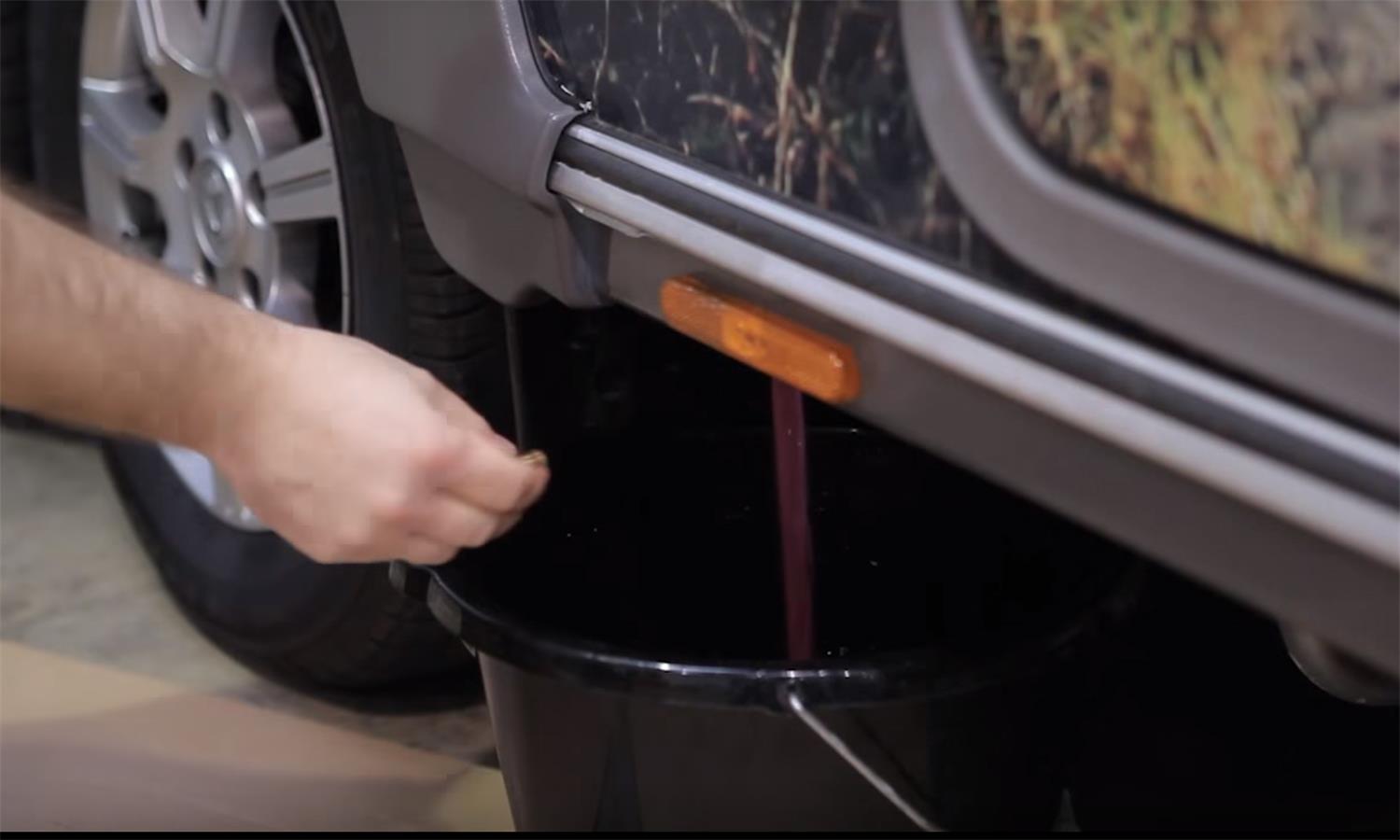
Remove any plastic or wooden cover fitted over the expansion tank. Detach the expansion tank by removing the screws and unclipping the rubber connections.
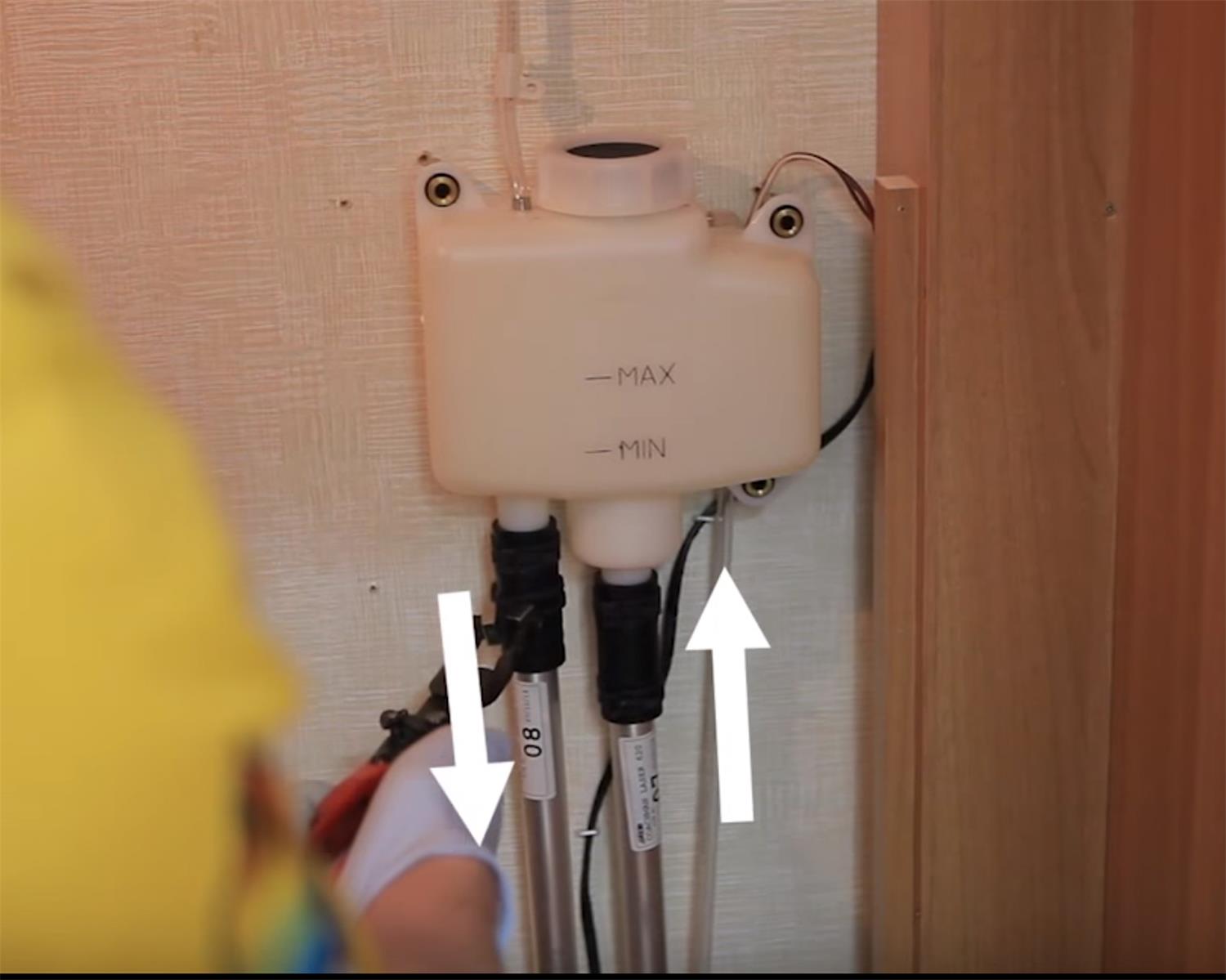 Removing the cover to reach the expansion tank and then remove the expansion tank
Removing the cover to reach the expansion tank and then remove the expansion tank.
Attach the waste hose to the inlet pipe that flows to the waste bucket.
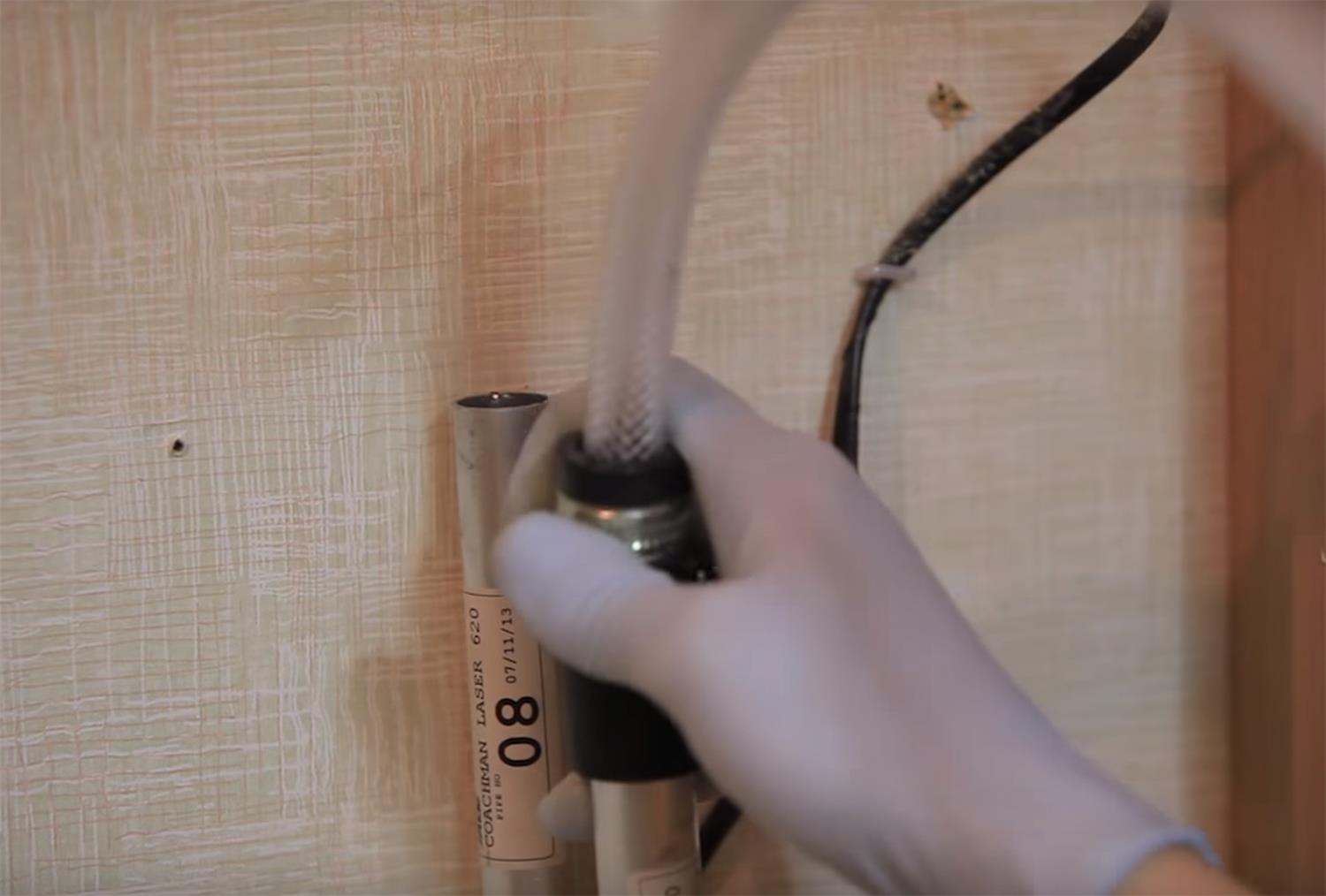
Using the Alde service pump, attach the nozzle to the flow outlet pipe.
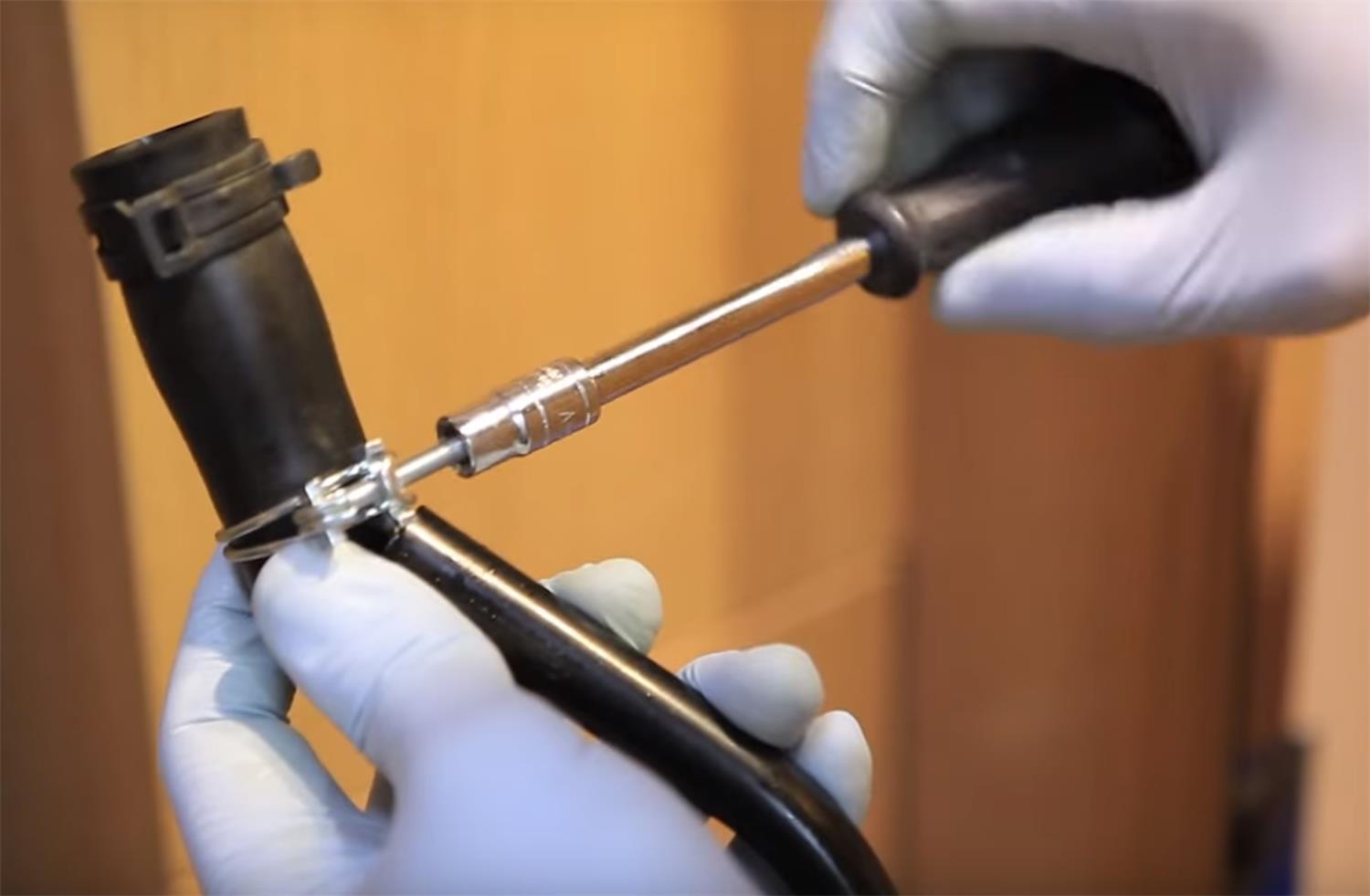
With the Alde Service pump lever in the downward position, pump the new Ethylene Glycol fluid into the system.
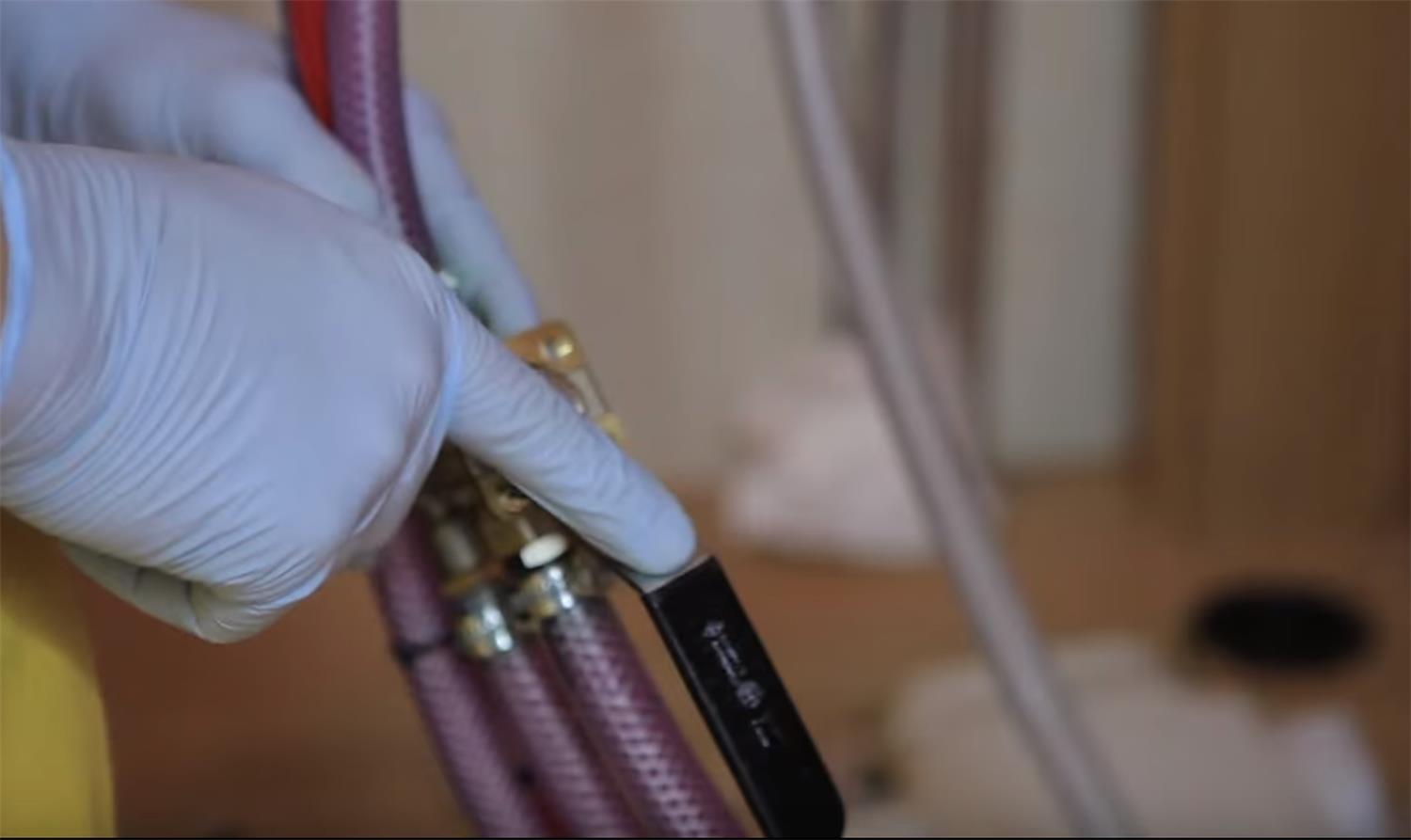
You need to continue pumping, until new antifreeze starts to enter the waste bucket.
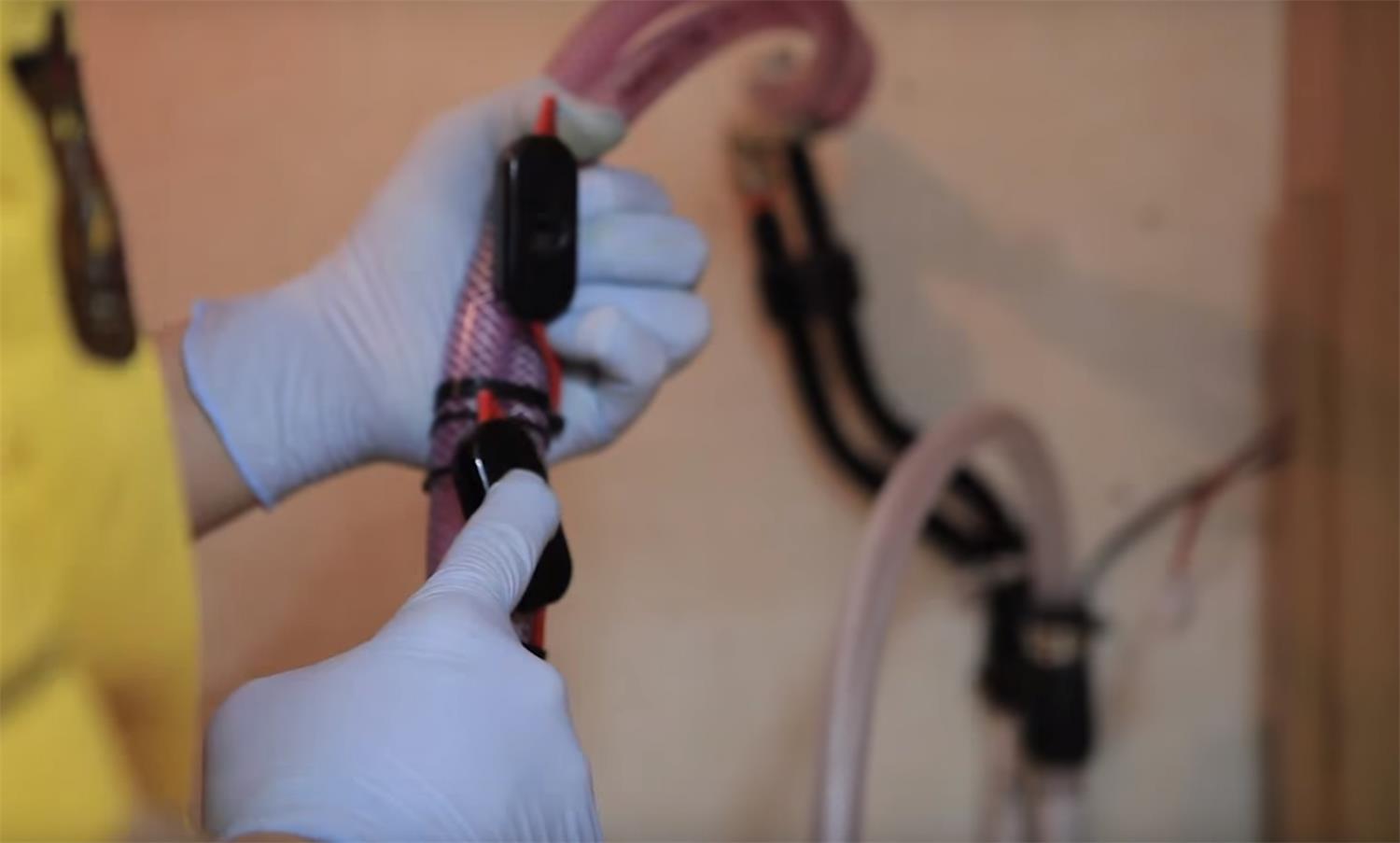
Then remove the service pump and reattach the expansion tank, replacing the wooden or plastic cover. The closing pliers will help you to attach hoses throughout this process. You can then use the service pump to top up the system or bleed it as required.
If you need to replace any other parts or needs Alde Water Heater spares, look in our
Alde Accessories and
Alde Water Heater spares to find all you will need.










